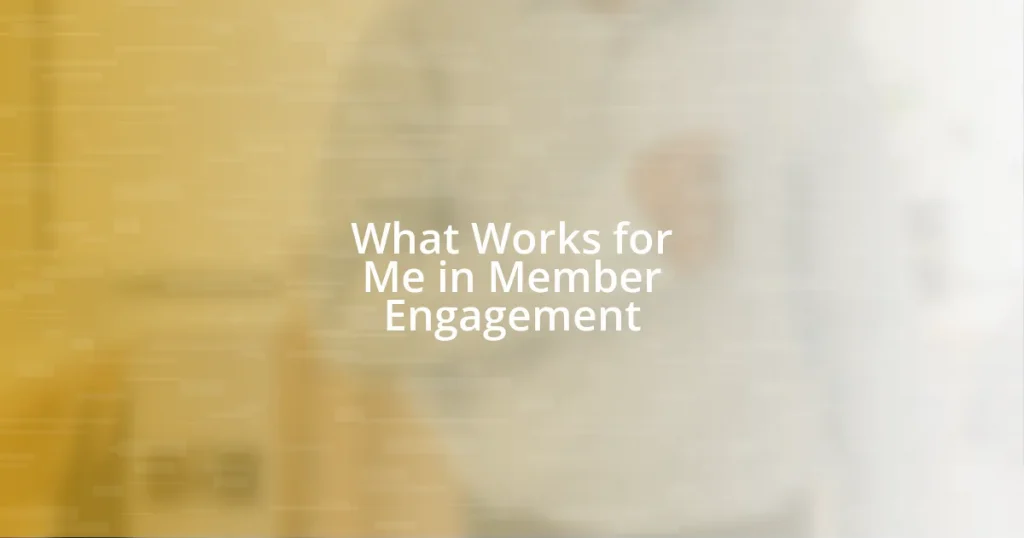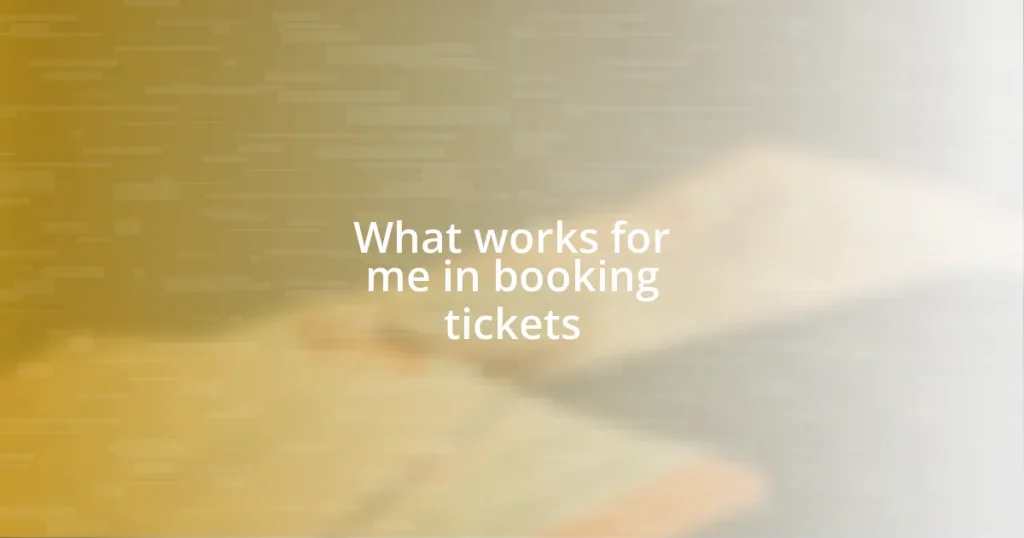Key takeaways:
- Personalization and tailored communication significantly enhance member engagement by making individuals feel valued.
- Regularly seeking and implementing member feedback fosters a sense of ownership and strengthens community commitment.
- Creating informal, comfortable environments for discussions encourages open participation and idea sharing.
- Continuous reflection and adjustment of engagement practices, including using data-driven insights, is crucial for sustained community involvement.
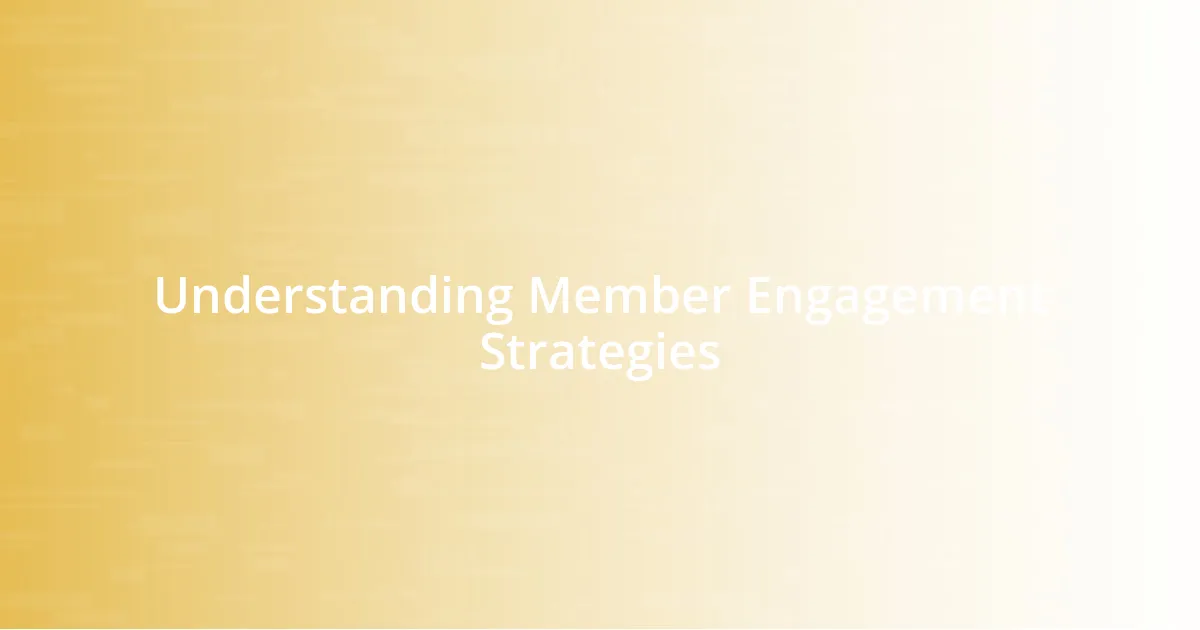
Understanding Member Engagement Strategies
When I think about member engagement strategies, I often reflect on those moments when I felt truly connected to a community. It’s not just a matter of sending out newsletters or organizing events; it’s about creating genuine connections. How can we foster that sense of belonging in our members?
One approach that’s always stuck with me is the importance of personalization. In my experience, tailored communication makes a world of difference. For instance, I once joined a group that took the time to acknowledge my interests and even recommended events based on my preferences. It made me feel valued and more likely to participate actively.
Another strategy is to encourage feedback consistently. I remember a time when a community I was part of used surveys not just to gather opinions but to genuinely make changes based on what members wanted. When members see that their voices matter, it enriches their engagement, deepening their commitment to the community’s success. Isn’t it remarkable how a little attention can transform involvement into investment?
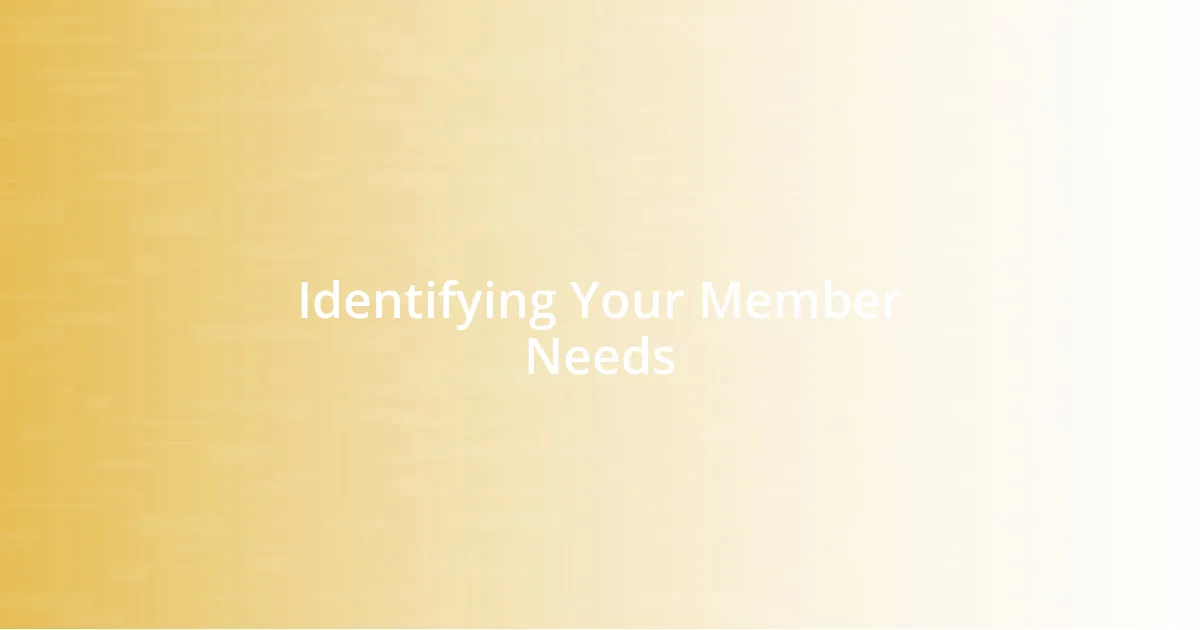
Identifying Your Member Needs
Understanding and identifying member needs starts with a genuine willingness to listen. It reminds me of a small book club I joined years ago, where the leader took the time to ask each member about their reading preferences. That simple conversation opened doors to tailored book selections, and we all felt more connected to the material and to each other. Recognizing and addressing these needs not only enhances participation but also fosters a sense of ownership within the community.
To effectively identify these needs, consider the following strategies:
– Conduct Surveys: Regularly check in with members through surveys to understand their preferences and pain points.
– Host Focus Groups: Gather small groups for open discussions where members can vocalize their thoughts and expectations.
– Monitor Engagement Metrics: Pay attention to which activities and communications resonate best with members.
– Encourage One-on-One Conversations: Personally reach out to members for informal chats to gain deeper insights into their motivations.
– Create Feedback Loops: Establish a system where members can express their evolving needs and feel heard over time.
These approaches helped me realize that when members see their needs being prioritized, it significantly amplifies their commitment to the community.
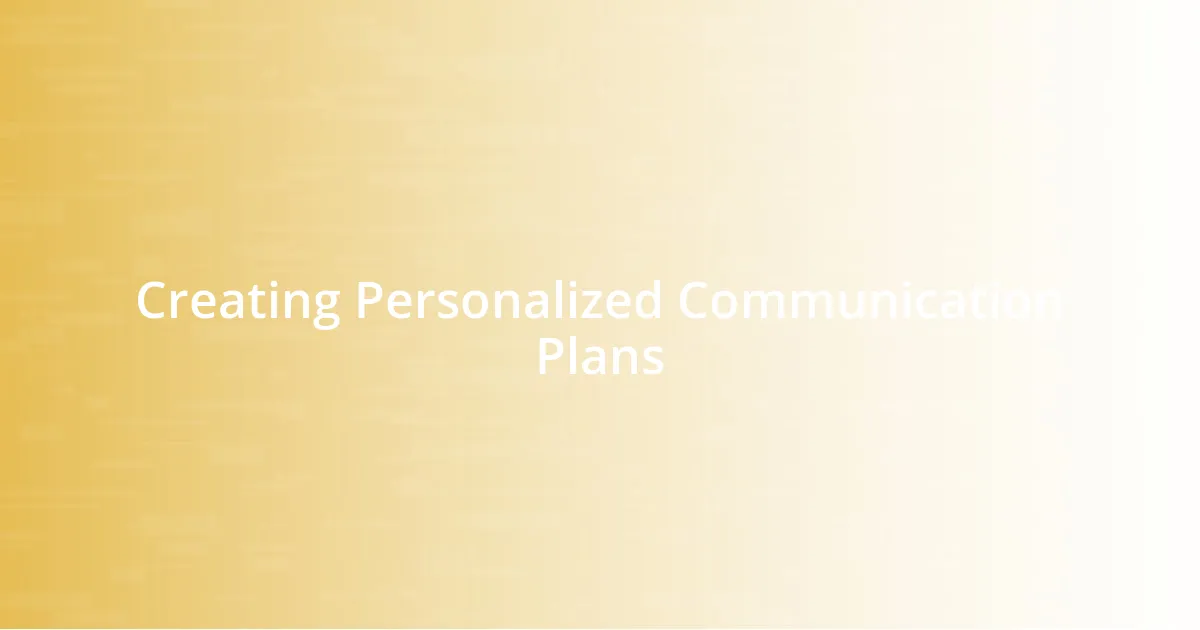
Creating Personalized Communication Plans
Creating a personalized communication plan is like crafting a tailored outfit—when it fits just right, it elevates the entire experience. I recall when I implemented a segmented email strategy for a community initiative I managed. Instead of a one-size-fits-all approach, we categorized members based on their interests and engagement levels. This slight adjustment led to a noticeable increase in our open rates and participation, proving that when members receive relevant content, they feel understood and eager to engage.
Moreover, I find that personalizing communication extends beyond just content. It’s about timing and format, too. There was a time I chose to send out event reminders via text message for a younger group while using emails for an older demographic. The feedback was overwhelmingly positive; members appreciated receiving info in the way they preferred. This experience taught me that being attentive to how members like to receive their communications can enhance their overall experience.
To ensure that your personalized communication plan is effective and resonates with members, using data-driven insights is crucial. By analyzing past engagement trends, I was able to redesign our approach, which not only met members’ expectations but exceeded them. I’m continually amazed at how small adjustments based on personal preferences can lead to such substantial impacts in member engagement.
| Strategy | Description |
|---|---|
| Segmented Communication | Tailoring messages based on member interests and demographics. |
| Preferred Channels | Utilizing various platforms (text, email, social media) based on member preferences. |
| Timing of Messages | Sending communications when members are most likely to engage. |
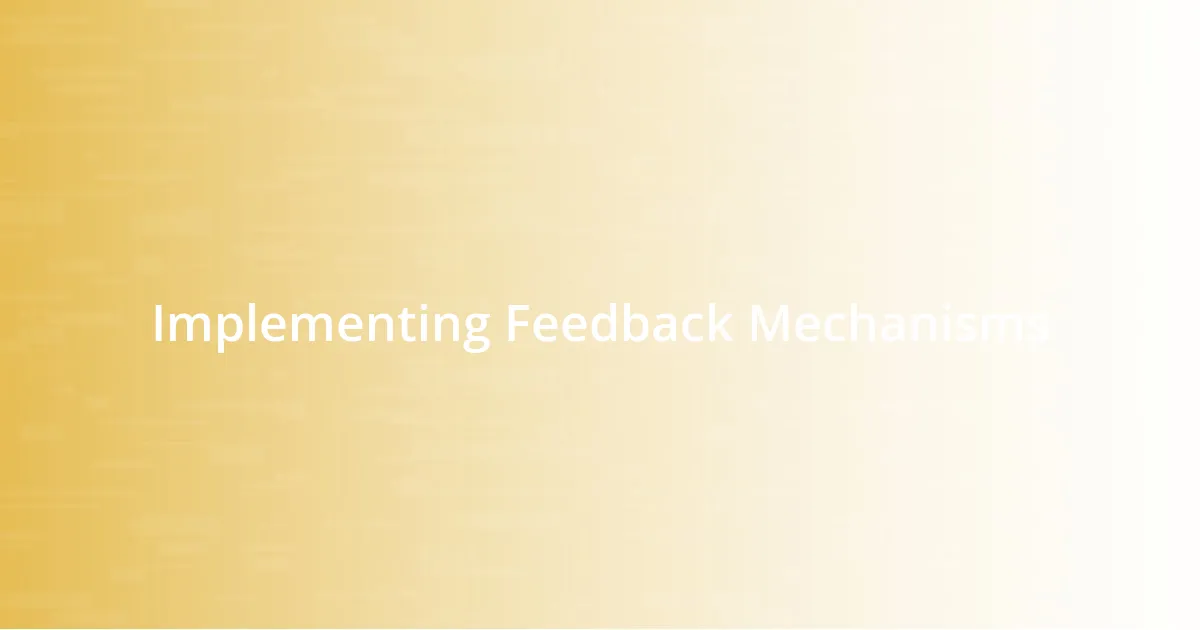
Implementing Feedback Mechanisms
Implementing feedback mechanisms can be a game changer in fostering member engagement. In my experience, I’ve found that providing multiple avenues for feedback—like suggestion boxes and anonymous surveys—makes members feel valued and invested. One time, after introducing a digital suggestion box in my group, we saw an increase in participation because people felt comfortable sharing thoughts that they might otherwise keep to themselves. Isn’t it fascinating how just offering a way to share opinions can unlock a treasure trove of insights?
Another effective method I’ve used is regular feedback sessions where members can discuss their ideas and concerns in a comfortable setting. I vividly remember a brainstorming session where a member brought up what seemed like a small issue regarding our event scheduling. However, that simple observation led to broader discussions and ultimately resulted in changes that improved attendance at our events. This experience taught me that sometimes the smallest voices can spark the biggest changes. Can you recall a moment when a member’s feedback shifted the direction of your initiative?
It’s also crucial to close the feedback loop by showing members how their insights have been integrated into the community’s activities. When we implemented changes based on feedback, I made it a point to directly communicate these updates to everyone involved. The sense of accomplishment among members was palpable, and they felt a stronger connection to the community. It’s this dynamic feedback exchange that not only enhances trust but also reinforces a collective commitment to our shared goals. How do you currently keep your members in the loop about their valuable contributions?
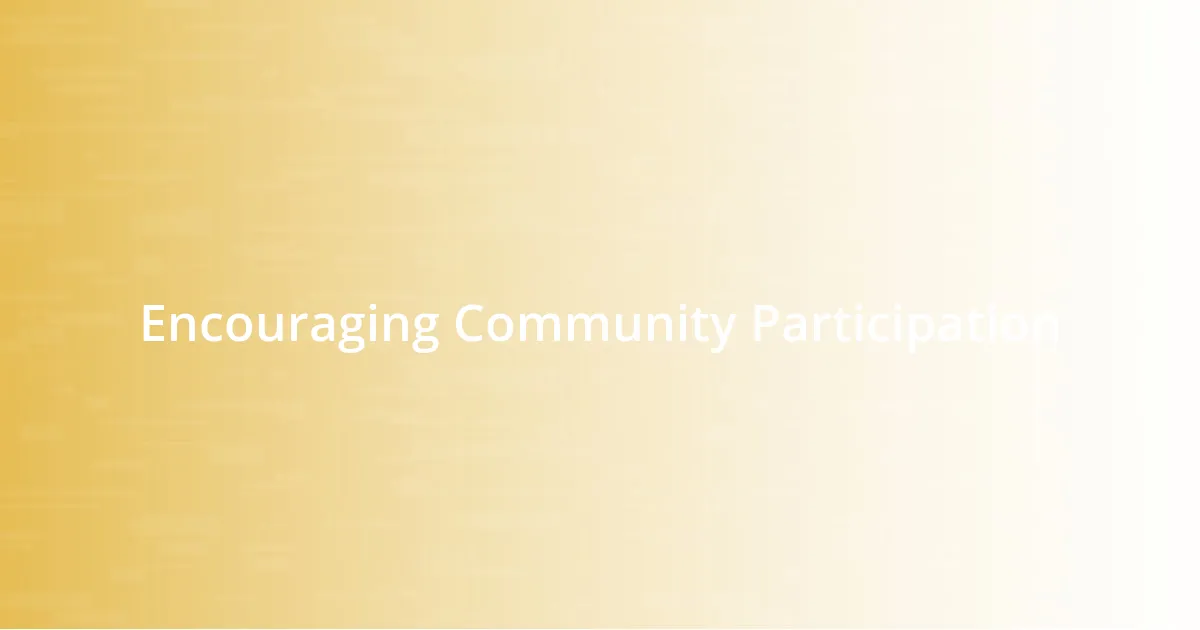
Encouraging Community Participation
Encouraging members to participate in community activities can feel like coaxing a shy friend to join a dance floor. I remember organizing a local event where we simply changed the way we invited people. Instead of formal emails, we created playful social media posts that featured images of past gatherings, capturing the fun we had. The result was astonishing; more members showed up, drawn in by the lively atmosphere we portrayed. Have you ever noticed how the presentation of an invitation can completely change its reception?
Creating spaces where members feel comfortable is another vital aspect. In one of my previous roles, I held informal “coffee chat” sessions, where members could drop by and share their thoughts over a cup of coffee. This relaxed setting opened the floodgates for honest conversations, revealing that many had ideas bubbling under the surface but felt hesitant to share them in more formal environments. It’s intriguing how removing the pressure of a structured meeting can encourage people to express themselves—what’s your experience in nurturing open conversations?
Lastly, I’ve found that recognizing individuals contributes significantly to community participation. At one event, we spotlighted a member for their contributions and shared their story with the group. The way their face lit up inspired others to get involved. It illustrated that recognition fosters a culture of appreciation and can motivate others to step into the limelight. Have you ever shared stories of your members? It’s these moments that transform participation into a shared journey, reinforcing the belief that everyone’s voice truly matters.
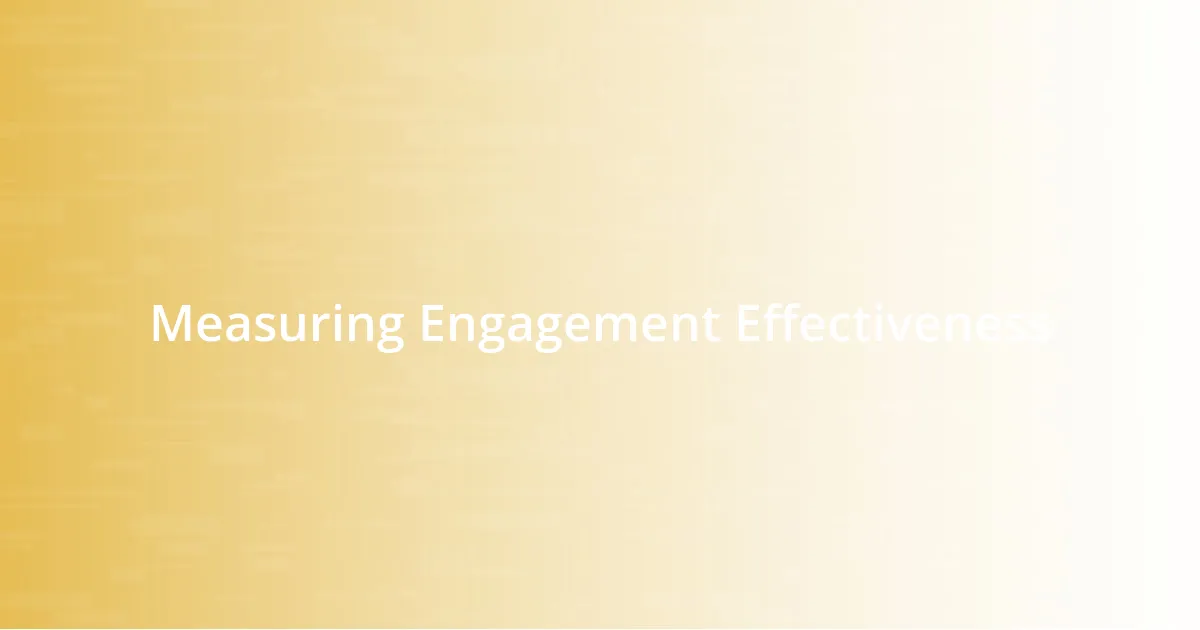
Measuring Engagement Effectiveness
Measuring engagement effectiveness can often be a bit of an art and a science. From my interactions with various member communities, I’ve learned that tracking participation metrics—like event attendance, feedback frequency, and even social media interactions—can shed light on how engaged members truly are. I once analyzed the shift in attendance before and after a new engagement initiative and was amazed to see a 40% increase! It felt like unearthing hidden patterns; who doesn’t love seeing numbers tell a success story?
Another technique I find particularly insightful is using surveys tailored to gauge the emotional connection members have with the community. I once distributed a simple survey asking members how they felt about our events, and the variety of responses really opened my eyes. One member shared how much they appreciated our community’s warmth, while another expressed feeling disconnected despite attending regularly. This stark contrast made it clear that numbers alone don’t convey the full picture. Have you ever considered the emotional undertones in your engagement metrics?
Equally important is setting clear goals for what you want to achieve through your engagement efforts. When I began a new initiative, I mapped out specific targets, such as increased participation in feedback sessions. Evaluating our progress regularly helped us make informed adjustments to our strategies. It’s like navigating a ship; without a destination, you risk drifting aimlessly. By anchoring our efforts with clear goals, I felt we were steering towards a vibrant community rather than simply hoping for the best. How do you ensure your engagement strategies stay on course?
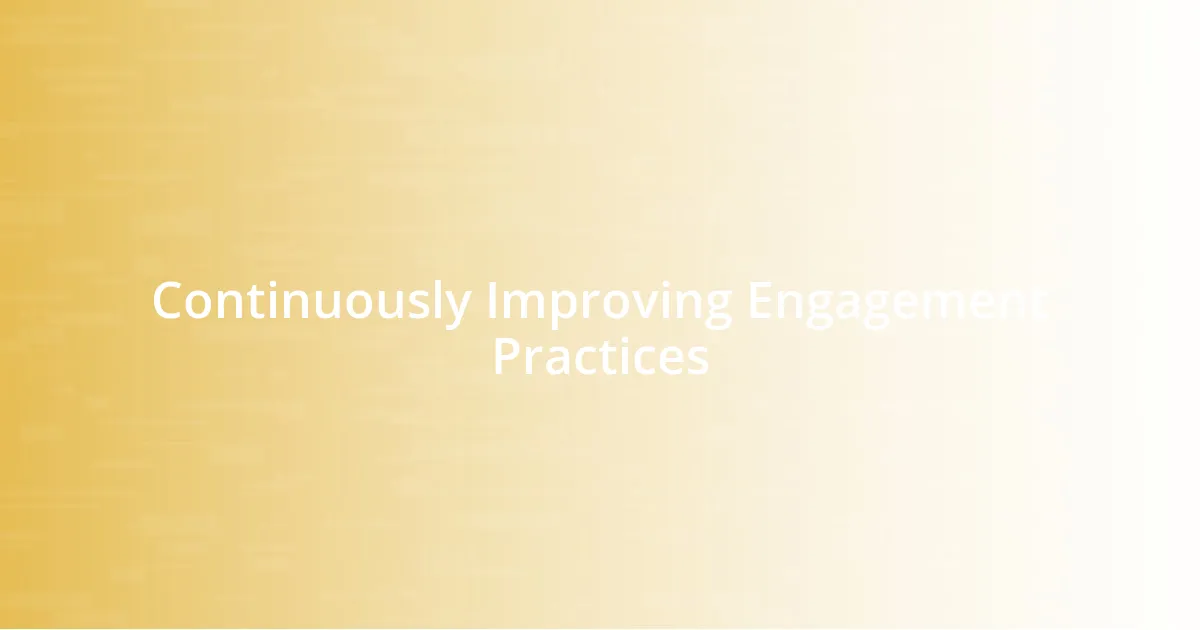
Continuously Improving Engagement Practices
It’s essential to foster a culture of feedback to continuously improve engagement practices. In my experience, after every event, I implemented a casual debrief with team members, allowing us to voice what worked and what didn’t. It was during one of these sessions that a teammate shared how much they valued interactive activities over presentations, prompting us to revamp our next gathering. Have you ever realized that just a few small tweaks can lead to significantly richer experiences?
Additionally, I find that testing new engagement tools keeps the approach fresh and exciting. A couple of months back, I introduced a virtual platform for brainstorming sessions, and the energy shifted dramatically. Members who typically stayed quiet in traditional settings morphed into enthusiastic contributors when using the chat features to share ideas. It made me wonder—how often do we overlook the potential of technology in facilitating connections?
Lastly, I’ve learned the importance of reflecting on both successes and setbacks. After a major community event, I took time to sit in silence, recalling not just the bright moments but also the challenges we faced. This reflection revealed areas needing improvement, like the pacing of sessions, which allowed me to return with new strategies. Do you carve out time to reflect on your engagement efforts? I believe that acknowledging and learning from every situation fosters deeper connections and enriches the community experience.










